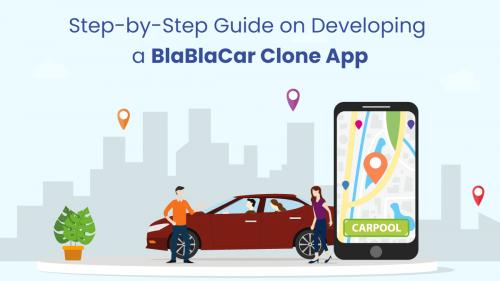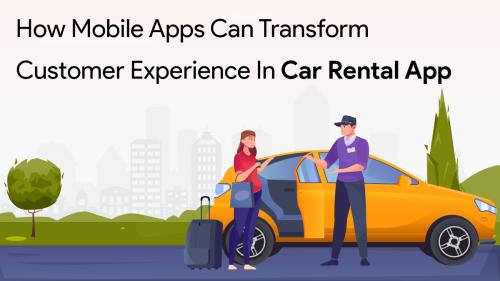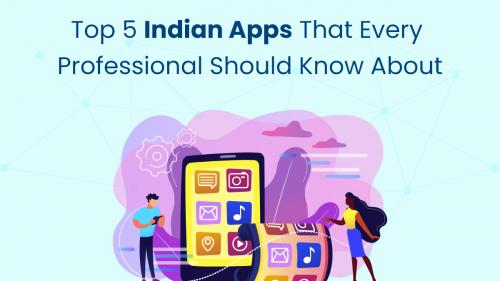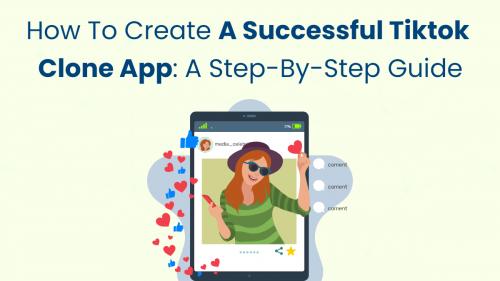Step-by-Step Guide on Developing a BlaBlaCar Clone App

Ride-sharing apps have revolutionized the way we travel, offering a convenient and cost-effective solution for both drivers and passengers. BlaBlaCar, a leading carpooling platform, has set a benchmark in this industry. If you're looking to develop a similar app, this step-by-step guide will walk you through the process, from initial planning to launch.
Step 1: Market Research and Analysis
Understanding the Market
Before diving into development, it's crucial to understand the market. Research the current trends in ride-sharing, analyze competitors, and identify your target audience. This information will help you tailor your app to meet user needs and stand out in the market.
Identifying Key Features
List the essential features your BlaBlaCar clone app should have, such as user registration, ride booking, payment processing, GPS navigation, and user reviews. Consider additional features like in-app chat, ride history, and emergency contact options to enhance user experience.
Step 2: Planning and Designing the App
Creating a Project Plan
Develop a detailed project plan outlining the development stages, timelines, and resources required. Define the scope of the project and set realistic milestones to track progress.
Designing the User Interface (UI)
The UI design plays a vital role in user satisfaction. Create wireframes and prototypes to visualize the app's layout and flow. Focus on a clean, intuitive design that makes it easy for users to navigate and book rides.
User Experience (UX) Considerations
Ensure the UX design is user-centric. Simplify the registration and booking processes, provide clear instructions, and incorporate feedback mechanisms to continuously improve the app based on user input.
Step 3: Choosing the Right Technology Stack
Front-End Development
For the front end, choose technologies that offer a seamless and responsive user experience. Popular choices include React Native, Flutter, and Swift for iOS and Kotlin for Android.
Back-End Development
The back-end should handle user data, ride details, payment processing, and more. Consider using Node.js, Django, or Ruby on Rails for robust and scalable back-end development.
Database Management
Select a reliable database to store user information, ride details, and transaction history. Options include MySQL, PostgreSQL, and MongoDB. Ensure the database is secure and can handle high traffic volumes.
Step 4: Developing the Core Features
User Registration and Authentication
Implement a secure user registration and authentication system. Allow users to sign up using email, phone numbers, or social media accounts. Ensure that user data is encrypted and protected.
Ride Booking and Matching
Develop a ride-booking system that allows users to search for and book rides based on their preferences. Implement an algorithm to match passengers with drivers based on factors like route, availability, and user ratings.
GPS and Navigation
Integrate GPS and navigation features to provide real-time tracking of rides. Use APIs from Google Maps or Mapbox to offer accurate and reliable navigation services.
Payment Processing
Incorporate a secure payment gateway to handle transactions. Support multiple payment options, such as credit/debit cards, digital wallets, and in-app payments. Ensure compliance with payment security standards.
Ratings and Reviews
Enable users to rate and review their ride experience. This feature helps build trust and improves the overall quality of the service.
In-App Chat
Add an in-app chat feature to facilitate communication between drivers and passengers. This helps in coordinating pick-up points and resolving any queries.
Step 5: Testing the App
Functional Testing
Conduct thorough functional testing to ensure all features work as intended. Test the app on different devices and operating systems to identify and fix any issues.
Performance Testing
Evaluate the app's performance under various conditions, such as high user traffic and poor network connectivity. Optimize the app to ensure it runs smoothly and efficiently.
Security Testing
Perform security testing to identify vulnerabilities and protect user data. Implement measures to prevent hacking, data breaches, and other security threats.
Step 6: Launching the App
Beta Testing
Before the official launch, release a beta version of the app to a small group of users. Gather feedback and make necessary improvements based on their input.
Marketing and Promotion
Develop a marketing strategy to promote your app. Utilize social media, online ads, and partnerships to reach your target audience. Highlight the unique features and benefits of your app to attract users.
Official Launch
Once the app is thoroughly tested and refined, proceed with the official launch. Make the app available on major platforms like the App Store and Google Play.
Step 7: Post-Launch Activities
User Support and Feedback
Provide excellent customer support to address user queries and issues. Encourage users to provide feedback and use it to make continuous improvements to the app.
Regular Updates
Keep the app updated with new features, bug fixes, and security enhancements. Regular updates help retain users and keep the app competitive.
Analyzing User Data
Analyze user data to understand their behavior and preferences. Use this information to optimize the app and offer personalized experiences.










Comments